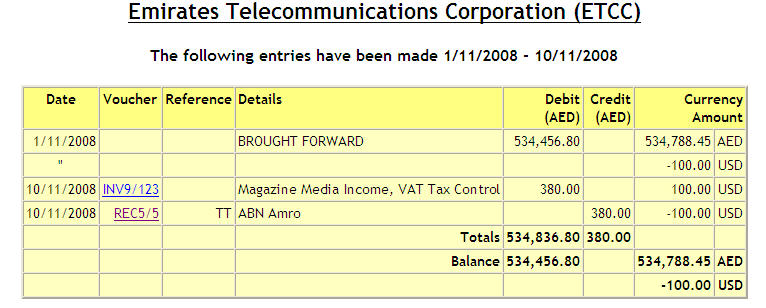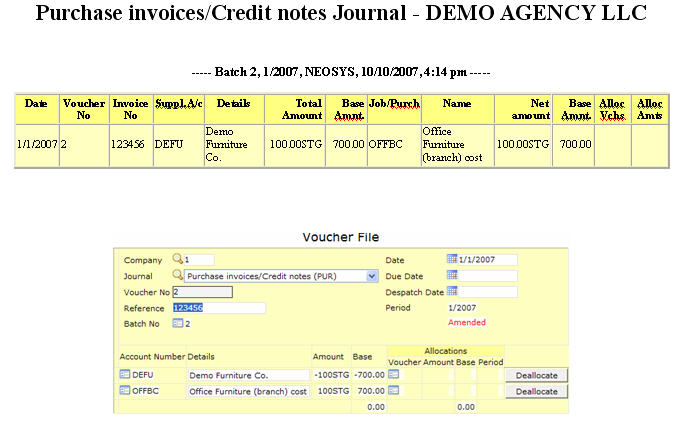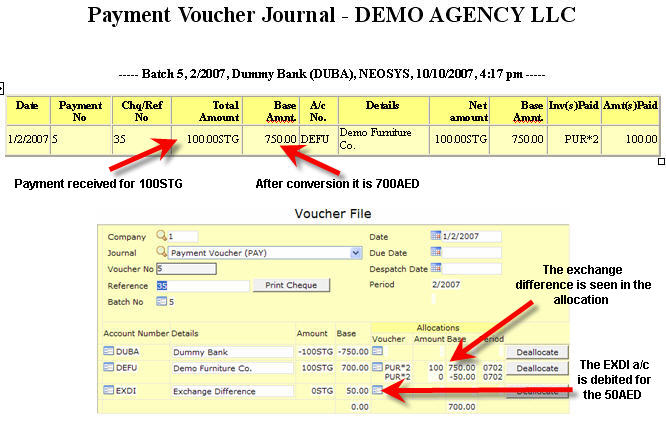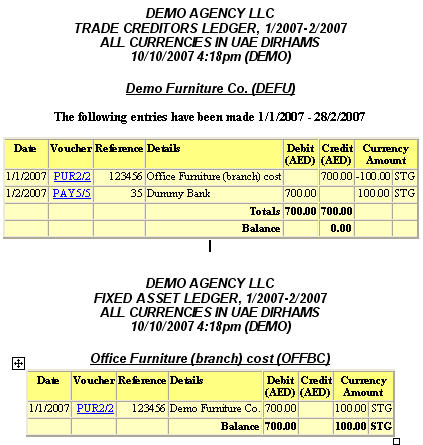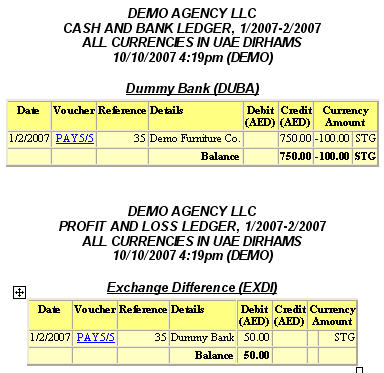Handling Exchange Losses & Gains in NEOSYS: Difference between revisions
mNo edit summary |
|
| (One intermediate revision by one other user not shown) | |
(No difference)
| |
Latest revision as of 07:34, 23 November 2022
Handling Exchange Losses & Gains
NEOSYS posts all exchange gains or losses automatically. Users cannot enter amounts into this account but it is not needed since the system will post it.
We advise against posting exchange gains and losses manually because technically the currency amount on such transaction is zero. Users can just post currency amounts and let the system work it all out.
In one NEOSYS voucher, users may debit in one currency and credit in a different currency. The base amount will usually not agree by a small amount and the system will add a third line to the voucher to make the base currency balance. The account on the third line will be the Exchange Difference account.
NEOSYS knows a lot about currency conversion so with some patience, you should be able to learn how it works in NEOSYS. Alternatively, this can all be done manually but it is prone to user error.
Exchange Losses & Gains on receipts from Clients
Receipts are valued at the value of the invoices that they pay off. By value we mean the base equivalent is calculated from the invoice instead of from the usual currency file exchange rate or any manual attempt.
Note that the base amount (to the client / account) on the journal will be different than what it is in the voucher file or the ledger printout.
The journal shows the same exchange rate as to the amount in the bank account which is usually the exchange rate in the exchange rate file unless the user has overwritten the base rate, which would be unusual.
Losses on Receipts
Invoice was issued for 100 USD / 380 base amount
Receipt was issued for 100 USD / 367.50 base amount
However when posted, the ledger printout shows that the amount recorded in the client account is 100 USD / 380 base amount
If you look at the voucher, you can see that the difference of 12.50 base amount shows as a Debit to the EXDI (Exchange Difference) A/c.
Note: In case of receiving 50% of the currency amount (eg 50 USD / 183.8 base amount) it takes the base amount to the client which is 50% of the value of the invoice (50 USD / 190 base amount). It will follow the same procedure and the amount to the client will be proportionate to the amount of invoice allocated.
Gains on Receipts
Invoice was issued for 100 USD / 380 base amount

Receipt was issued for 100 USD / 390 base amount

However when posted, the voucher shows that the amount recorded in the client account is 100 USD / 380 base amount and the overpayment of 10 base amount is posted as a debit to the EXDI a/c.
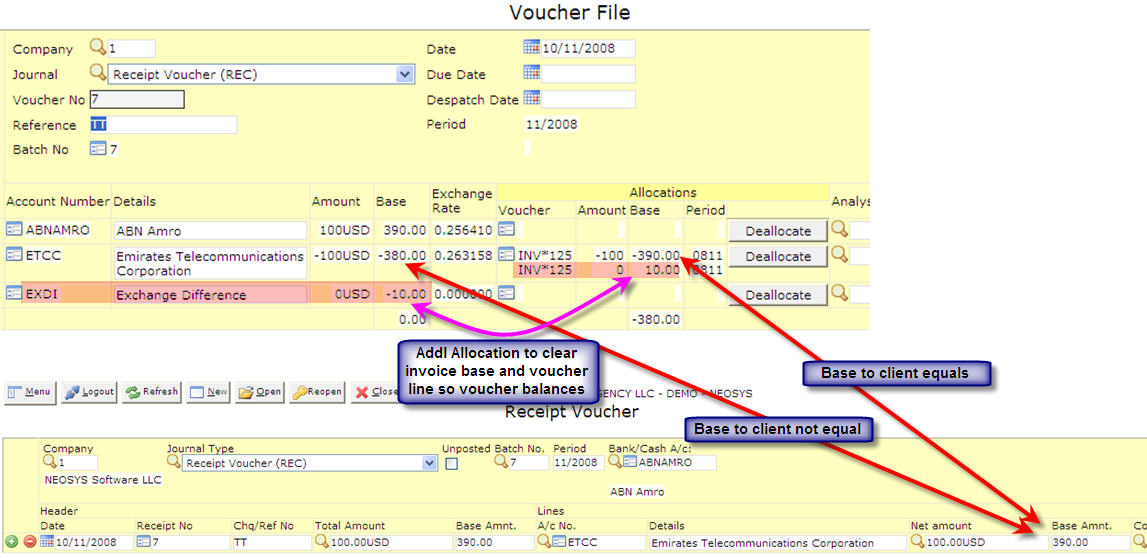
Exchange Losses & Gains on payment to Supplier Invoices
Sometimes the foreign exchange rate fluctuates and hence there is a difference in the invoice currency amount issued or received as compared to the actual payment received or paid.
Hence NEOSYS handles these differences and allots the amount to a Exchange Loss or Gain A/c.
Below is an example of a sale which has been done:
A client is invoiced for 100STG on 1/1/2007. On this date the exchange rate was 1 STG=7 AED
The client makes a payment for this invoice on 1/2/2007. However the exchange rate on this day has changed to 1 STG=7.5 AED. Hence there is a profit of 50 AED when we receive this payment. NEOSYS automatically notices this and does the following:
- Allocates the payment of 100STG (750AED) to the invoice in the client a/c
- Credits the 50AED from the allocation which is overallocated to the invoice
- Debits the Exchange Loss or Gain A/c (EXDI in this case)
The following are the ledger printouts of all the accounts which were involved in this transaction:


